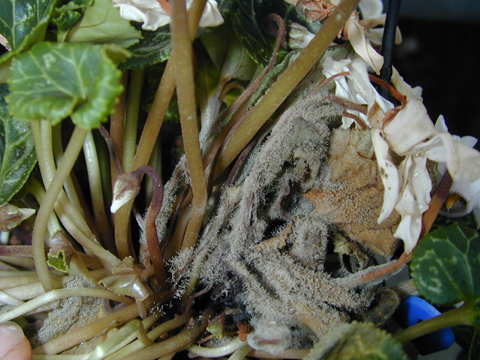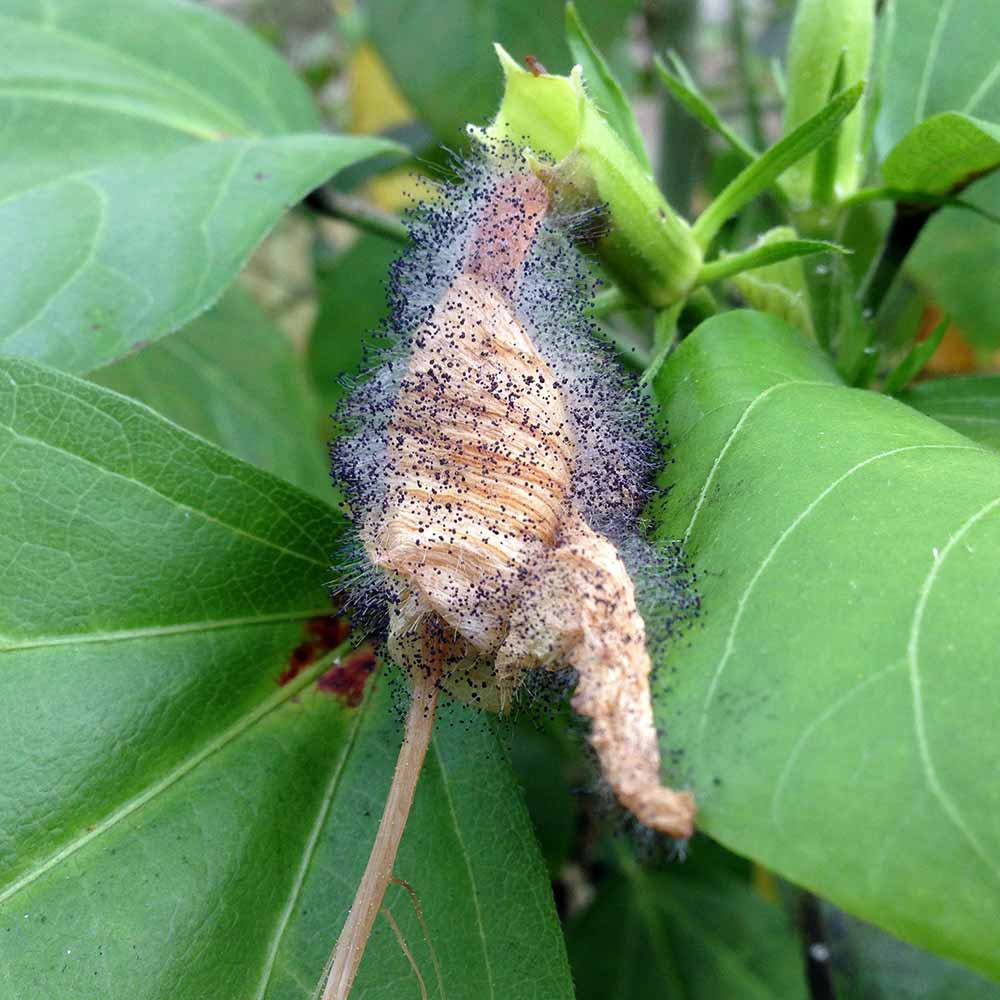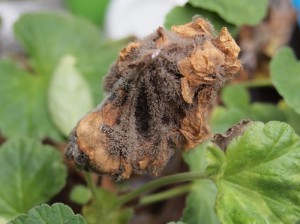
Gray Rot
Botrytis Cinerea
Pathogen:
Fungus
Type:
Risk:
INTERMEDIATE






DESCRIPTION
Pathogen description
Botrytis cinerea is a fungal pathogen that causes the disease known as gray mold on a wide variety of plants, including agricultural crops and ornamental plants. This pathogen is able to survive in different environmental conditions and can cause devastating damage to crops, especially in conditions of high humidity and moderate temperatures. Botrytis cinerea spreads mainly through spores that are dispersed in the air and can adhere to plant surfaces, where they germinate and colonize tissues, producing characteristic symptoms in affected plants.
Disease description
In ornamental and garden plants, gray mold caused by Botrytis cinerea manifests itself as watery, cottony Taches on leaves, stems and flowers. These Taches may turn brown or grayish as the disease progresses, and may eventually cover the entire plant. Other symptoms include shoot rot and the appearance of a powdery substance on the surface of affected parts of the plant. Gray mold can significantly weaken plants and compromise their overall health if not properly controlled.

TEMPERATURE AND HUMIDITY
15 - 25ºC
90% - 100%

VOIES DE TRANSMISSION
Contaminated air, irrigation water.

Chemical treatments
CONTROL
• AZOXISTROBIN 25% [SC] P/V
• CAPTAN 47.5% [SC] P/V
• CIPRODINIL 37.5% + FLUDIOXONIL 25% [WG] P/P
• PHENHEXAMIDE 50% [SC] P/V
• PHENHEXAMIDE 50% [WG] P/P
• FOLPET 50% [SC] P/V
• FOLPET 80% [WG] P/P
• POTASSIUM HYDROGEN CARBONATE 0.425% [AL] P/V
• POTASSIUM HYDROGEN CARBONATE 85% [SP] P/P
• LAMINARIN 4.5% [SL] P/S
• COPPER OXYCHLORIDE 35% (exp. in Cu) [WG] P/P
• COPPER OXYCHLORIDE 35% (EXPR. IN CU) [WG] P/P
• PIRACLOSTROBIN 6.7% + BOSCALIDE 26.7% ( ) [WG] P/P
• PIRACLOSTROBIN 6.7% + BOSCALIDE 26.7% (I) [WG] P/P
Treatments authorized in organic farming
• POTASSIUM HYDROGEN CARBONATE 0.425% [AL] P/V
• POTASSIUM HYDROGEN CARBONATE 85% [SP] P/P
• LAMINARIN 4.5% [SL] P/S
• COPPER OXYCHLORIDE 35% (exp. in Cu) [WG] P/P
• COPPER OXYCHLORIDE 35% (EXPR. IN CU) [WG] P/P
Biological control
• BACILLUS AMYLOLIQUEFACIENS subsp. plantarum (strain D747) 5% [SC] P/V
• BACILLUS SUBTILIS (strain IAB/BS03) (1 x 10E8 cfu/ml) 10 g/l [SL] P/V
• BACILLUS SUBTILIS (STRAIN QST 713) 1.34% [SC] P/V
• CLONOSTACHYS ROSEA CEPA J1446 (GLIOCLADIUM CATENULATUM (CEPA J1446)) (1 x 10E 9 cfu/g) 900 g/kg [WG] P/P
• GLIOCLADIUM CATENULATUM (STRAIN J1446) 32% (2 X 10E8 CFU/G) [WP] P/P
• PYTHIUM OLIGANDRUM (strain M1) 17.5% [WP] P/P
Preventive treatments
• AZOXISTROBIN 25% [SC] P/V
• BACILLUS AMYLOLIQUEFACIENS subsp. plantarum (strain D747) 5% [SC] P/V
• BACILLUS SUBTILIS (strain IAB/BS03) (1 x 10E8 cfu/ml) 10 g/l [SL] P/V
• BACILLUS SUBTILIS (STRAIN QST 713) 1.34% [SC] P/V
• CAPTAN 47.5% [SC] P/V
• CIPRODINIL 37.5% + FLUDIOXONIL 25% [WG] P/P
• CLONOSTACHYS ROSEA CEPA J1446 (GLIOCLADIUM CATENULATUM (CEPA J1446)) (1 x 10E 9 cfu/g) 900 g/kg [WG] P/P
• PHENHEXAMIDE 50% [SC] P/V
• PHENHEXAMIDE 50% [WG] P/P
• FOLPET 50% [SC] P/V
• FOLPET 80% [WG] P/P
• GLIOCLADIUM CATENULATUM (STRAIN J1446) 32% (2 X 10E8 CFU/G) [WP] P/P
• POTASSIUM HYDROGEN CARBONATE 0.425% [AL] P/V
• POTASSIUM HYDROGEN CARBONATE 85% [SP] P/P
• LAMINARIN 4.5% [SL] P/S
• COPPER OXYCHLORIDE 35% (exp. in Cu) [WG] P/P
• COPPER OXYCHLORIDE 35% (EXPR. IN CU) [WG] P/P
• PIRACLOSTROBIN 6.7% + BOSCALIDE 26.7% ( ) [WG] P/P
• PIRACLOSTROBIN 6.7% + BOSCALIDE 26.7% (I) [WG] P/P
• PYTHIUM OLIGANDRUM (strain M1) 17.5% [WP] P/P
To prevent and control the appearance of gray mold on ornamental and garden plants, it is recommended to implement integrated pest management measures. This includes removing crop debris and infected plant material, proper pruning to improve air circulation around the plants, drip irrigation instead of overhead irrigation to avoid excessive moisture on the leaves, and preventative application. of organic or chemical fungicides as necessary.
Recommendations
*The recommended treatments are recommendations based on the authorities' databases and do not replace in any way the guidelines established by the legislation of each country.





